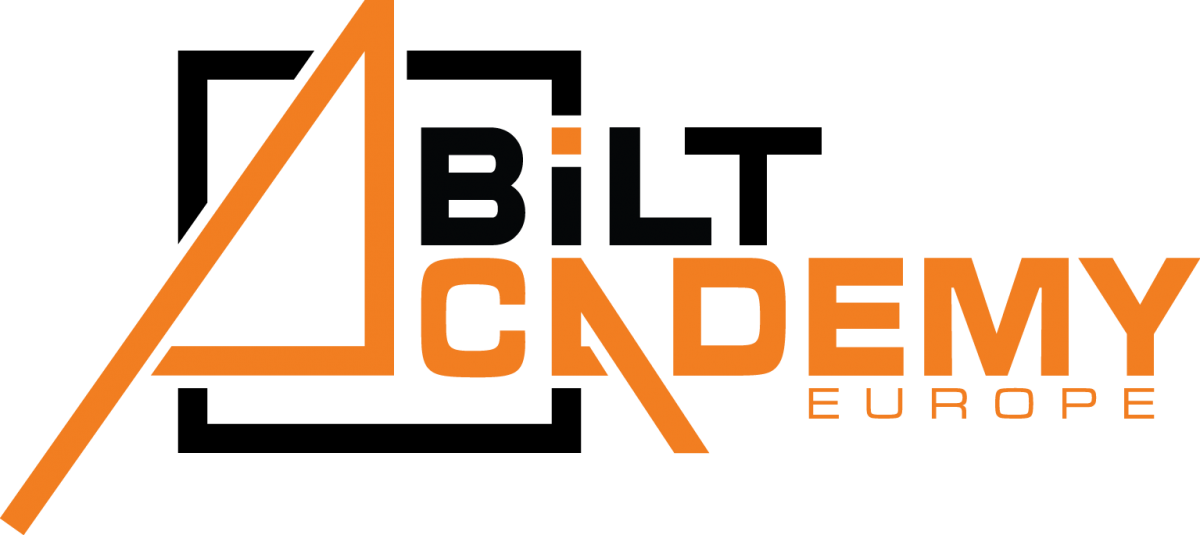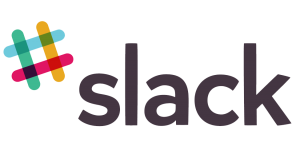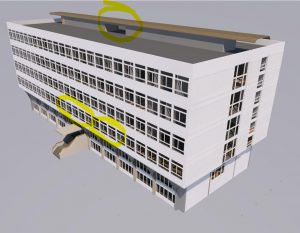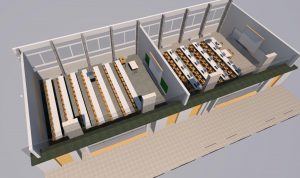We are more than happy and proud to announce that tickets for the BILT ACADEMY SUMMIT 2019 are sold out and registrations are closed. We are delighted about this successful outcome and looking so much forward to welcome more than 100 students from all over Europe.
Category: BILT Academy
Mentor Announcement #7 & #8 Summit 2019
Dear all,
I am very excited to announce our mentors for the workshop Collaboration with IFC.
Drum roll for…
Diane Ramage & Andy Waring
Diane Ramage

Background
I have 30 years construction experience gained within construction across a range of projects and sectors and as BIM Manager at Keppie Design I develop our standards and procedures to align with those of the UK, and now the international, standards, providing guidance to staff and management while ensuring over 70 Revit users have continuing software and procedure skills development.
I’ve been using BIM software and methods since 2004 and have applied them on Architectural projects ranging from small residential units to multi-million commercial and healthcare schemes, working collaboratively with all other project consultants and clients. I have been a passionate advocate of BIM collaboration throughout my career and relish the fact that every day still teaches me something new.
I’m also part of the Keppie team who develop partnerships with further education establishments since I have also previously lectured in Architectural Technology and keep in contact with the education sector, where I’ve collaborated with lecturers in course development. I’ve trained others in implementation of BIM methods, technology and software since 2004 and as a committee member of the Glasgow Revit User Group I’m a firm believer that spreading and sharing knowledge will help the wider construction industry and ultimately be beneficial to the whole industry.
Her Motivation
I take great delight in watching students engage with the subject matter and progress their understanding and skills and I believe my experience can help students put the context of their learning experience into practical use within the “real” world of the construction industry. I’m excited to be taking part in BILT Academy as a mentor because it’ll be an opportunity to share experiential knowledge and help students transition from education to the workplace with confidence in their skills.
Andy Waring

Background
I graduated from the Glasgow School of Art in 2013 and became an architect in early 2017 completing various projects across the Sports, Education and Justice sectors with a combined project value of £70M in that time. I became the BIM manager of Holmes Miller Architects in early 2018. Holmes Miller has 3 offices, in Glasgow, London and Guangzhou with just under 100 staff. I lead the development and implementation of in house standards and content aligned to international specification and provide extensive training around various standards and tools both in house and externally. I also handle most ICT related matters and specialize in research and development projects ranging from the development of fully automated model validation procedures and various tools to aid parametric design and production. I am also developing integrations between finance software and various analysis tools for the SMT. Outside of Holmes Miller, I am a committee member for the Glasgow Revit User Group (GRUG) and have previously been the chair on various industry summits.
His Motivation
With concepts such as virtual digital construction and BIM becoming mainstream, we need intelligent and motivated students with the right knowledge to be productive and push the industry into the 21st century. Industry collaboration with education is vital to ensure that students are aware and prepared to join us in dragging the construction sector into the 21st century. I am delighted to be offered to opportunity to be a BILT Academy mentor to help guide the innovators of the future.
Key Learning Objectives
01- Learn how to collaborate with IFC files within Revit and to export an IFC from Revit
- Open an IFC using Revit and save as a Revit file
- Link a native IFC into a Revit model
- Export a Revit model to IFC
- Export formats
- Location of Revit IFC Export mapping table
- Simplified Export process
- Overview of IFC advanced export settings
02- Learn about the BIM interoperability suite for classification of model elements, and to prepare your model for COBie data
- Where to access the suite and an overview of the elements
- Classification manager overview
- COBie overview
- Workflow for COBie population in Revit
03- Learn about Revit Model Checker and how to customise it to suit standards
- Overview of Revit Model Checker
- Why /when use model checker
- Example of validation process using model checker
Short Q&A
1)Where do you see the importance of collaborating with IFC? Why this kind of standards are important for the AEC industry?
Working within Architecture I’m not the greatest advocate of the IFC format, I do think it’s very important that there is a method of interoperability through an open format but I see it more as a necessary complication to my job, since not everyone works across the same software formats. Industry software providers have resisted developing their platforms on a completely open format but the need for IFC import/export adds further time and effort onto projects where fee margins (in the UK) are very tight.
Additionally IFC still is not 100% accurate, and that margin of inaccuracy leave us at risk of being subject to legal disputes, hence it’s important that we adopt a workflow and method to interact with the IFC format, and we always ensure that any output in IFC format is clearly identified as being subject to potential inaccuracy or misinterpretation by the software used to read it as is the case with all exchange formats without a native editing tool
2)Could you briefly explain the difference between Open BIM and Closed BIM approaches? What is the need and role of IFC for Open BIM approach?
Closed BIM relies on every project participant using the same software, being version specific and requires no interoperability between different software formats. This rarely happens, since CAD, Excel, Navisworks, images would have different formats but are regularly incorporated to inform the project design.
Completely open BIM would encompass integration of all formats, in particular IFC and COBie, and this happens on most design projects, but it can be a difficult, time involved process and unless participants are familiar with good workflows and processes and have additional interoperability tools to handle the tasks involved these integrations can cause expensive delays to project progress.
An ideal open BIM world would see all software platforms linking together seamlessly using the native software platform formats, but this dream is unlikely to become reality, hence the need for tools to use IFC format and interoperability tools.
3)What is the most important message you want to give to the students after attending your workshop?
Always know the limitations of the deliverables you are signing up for, find out if they are fit for purpose and make your clients aware of this from the outset.
We’ve looked at some of the collaboration tools we use to provide our design services. They are not the essence of our design services, and regardless of how much automation and efficiency these tools provide, never underestimate the need for your design individuality, your thought and intellect, your expertise to inform any construction project. They say a bad worker blames his tools, instead be the expert worker who simply uses the tools to enhance inspired design.
Mentor Announcement #3 Summit 2019
Hi there,
I am very glad to announce the third mentor for the upcoming BILT Academy Summit 2019 who is going to mentor the class Design to BIM, BIM Strategy and Model Management!
Claudio Vittori Antisari
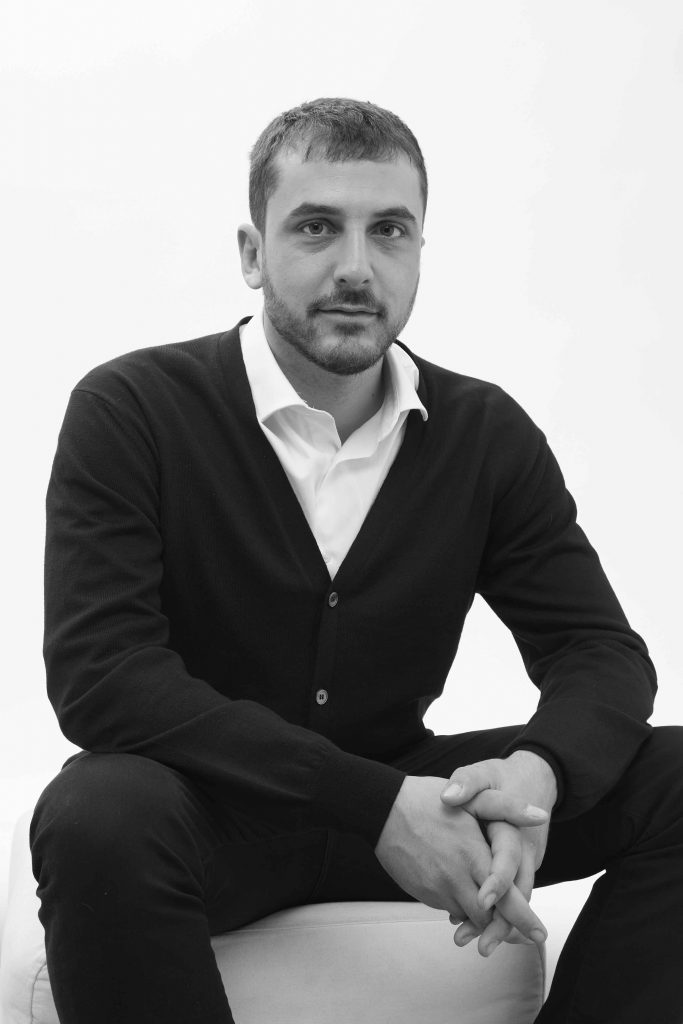
Biography
Claudio has a master’s degree in architecture and is specialized in BIM and Computational Design. He is the founder of Strategie Digitali srl a Computational BIM and Project Management consulting firm based in Milan, Italy. During his last 10 years of experience, he has had the opportunity to work in different BIM roles in different world areas: from BIM researcher to BIM consultant up to BIM manager. This exposure has given him a deep understanding of the BIM process for architectural offices. Nowadays he spends most of his time helping companies improving efficiency and effectiveness in building design. He participates actively in the BIM national and international debate, taking part in BIM-related events and conferences, participating in university research groups, and giving his consultancy to governance projects.
Motivation
The BILT Conference in one of the most important events for professionals in the construction industry aiming to improve their knowledge in Digital Design Technologies and to meet people from everywhere in the world. Nowadays there are very few places that can keen a friendly and open atmosphere and at the same time while delivering high-level classes and contents. For this reason, when I got the invite to teach at BILT Academy I immediately accepted. It will be a pleasure to contribute to show this wonderful environment to the new generation of designers and construction professionals.
KLO1 – BIM vs Conceptual Design: Best Friends or Enemies?
- Understand advantages and criticalities of BIM when used in the conceptual design phase
- Learn how to break down a project brief into a series of BIM related objectives.
- Understand BIM Model Uses, data and information production for the conceptual design phase.
KLO2 – Does your model reflects your ideas? Setting up a BIM Model for the conceptual design stage.
- Learn the basics of model management
- Learn how to translate a BIM Objective into actions on your Revit Model
- Learn how to create data suitable for the conceptual design stage
KLO3 – Data evaluation, review and strategies for a better evaluation
- Learn how to evaluate data from conceptual design in BIM
- Learn what is an Asset Model
- Learn the real benefits available from a full application of BIM to a conceptual design stage
QnA
1. Why is it important in your opinion to connect the Conceptual Design Stage of a project with Building Information Modelling?
There is a big misconception about the usage of BIM in the conceptual design stage, and moreover the usage of design technologies in that stage. We don’t aim to use digital design tool to replace the designer creativity. We need to use BIM in the design stage to produce data-informed design and to use data to evaluate and test our ideas. We want to use data in real-time to improve our design thanks to data-informed decisions. We want to use BIM in this stage to improve democracy in the design stage, with one is the best proposal for a competition? not everything in architecture can be measured, but many factors can be measured, and provide support to choose the better design.
2. How does Design influence Asset Management in a later project stage?
Well, here the term “garbage in, garbage out” fits very well. In the design stage, we make decisions that will heavily influence the entire life span of a building. Is never too early to start planning of an efficient, comfortable and sustainable building.
3. What is your personal goal to achieve with teaching/lecturing at the BILT Academy? What should the student learn of it, with which achievement should the student leave your class at the end of the day?
Since my first days in college, I had the luck to meet teachers that always encourage me to share knowledge. They were doing it, and they were pushing students to do the same. In our world sharing knowledge is the key to improve yourself while you are giving your little contribution to improve the world. When I was a student I was really looking at people presenting at BILT as the global organization for professionals in the AEC Industry. Being part of BILT Academy is an honor for me, and it means a lot. What I can say to the BILT Academy students? Choose your path, experiment, choose your teacher, do not follow only the traditional path for education. Come to see what I learn in my journey, that the pieces you need and keep growing.
Mentor Announcement #2 Summit 2019
I am very happy and excited to announce that our second mentor has been confirmed for the Computational Design Lab.
Our second mentor will be:
Mostafa El Ayoubi

Biography
A passionate architect and engineer, interested in everything new in the AEC industry. Mostafa is a true believer in data-driven construction and he works on developing/implementing tools and workflows to facilitate design, collaboration and project documentation. He is an active member of the Dynamo community and is the top-rated Dynamo Package developer.
He worked as an engineer in a study office in different fields (Mechanical, Electrical, Plumbing, Structure…) for four years. He then started the Data Shapes blog and co-founded the Data Shapes Company which provides cutting edge BIM support, training and workflows to AEC firms.
Mostafa misses his days at the architecture school where he could experiment designs and is really excited and humbled to be back in that environment to be part of the BILT Academy Summit!
Letter of Motivation
My main motivation for the membership program is to share. Sharing played a huge role in my learning experience. I learnt more from people who were generous enough to share time and knowledge than I did from school. I feel it is time for me to give back.
There were a few key moments in my life when I was struck by words or concepts. Those moments helped me find passion, and that is exactly what I wish to do for people. It often takes hearing the right words at the right time to inspire you for life.
I truly believe that the biggest contribution I can bring to my trade is to share with the community because no matter what you can achieve as an individual, it will never be as big as what you can achieve as a community.
Key Learning Objectives
- Understanding the basics of parametric and data-driven design
- Getting familiar with the workflow of producing a parametric structure
- Gaining a practical understanding of Generative Design
Short Q&A
Why is the Computational Design important?
The human brain is amazing for coming up with strong intelligent/sensitive concepts. But they are limited when it comes to exploring all the possible outcomes of those concepts given a certain amount of inputs. That’s where computational design intervenes: it allows the translation of design concepts into algorithms that can then harness the computing power of computers to explore more design options.
When did you start working on Computational Design and what was the trigger for it?
I started using computational design 7 years ago as I was working on a project with complex geometries. Implementing computational tools helped master the shapes and be more responsive when changes were brought to the project. After that, I realized that computational tools were also a fantastic means to manage data and automate tasks.
Is Comp Design just about architecture discipline? What is the scope of it?
The use of computational tools is not only for architects. Their scope ranges from design intents to model auditing. It is a means to make machines do what they are good at accomplishing a large amount of repetitive tasks with little to no mistakes. That lets humans focus on what really is their job and do what they do best: be creative and innovative.
Can you tell a little bit about your last or favorite project?
I’ve been lucky enough to work on many interesting projects but I have to say what I like the most is developing tools that can then be deployed for many users. The feeling of providing something useful that makes peoples work easier is what I find the most satisfaction.
Mentor Announcement #1 Summit 2019
I’m very happy that the committee decided to have a coding class this year.

The mentor of this workshop will be*drum roll folks*..
Frederic Beaupere
Background
Frederic Beaupere is an architect working at Herzog de Meuron since 2012, where he joined the Digital Technologies Group team, working as a BIM Manager. Beside the usual tasks like setup, training and support, he enjoys helping teams with Python scripts on all kinds of tasks. Before joining HdM in Basel, Switzerland, he worked at various offices in Hamburg and Berlin: Laura Jahnke Architekten, Zaha Hadid and Barkow Leibinger, after his diploma at TU Kaiserslautern. He enjoys writing Python both at work and at home.
Motivation
“Standing on the shoulders of giants” is a phrase you can often hear in talks in the Python community. To me this also seems the perfect fit to describe my motivation to run a Python workshop at BILT Academy: Without all these numerous smart people writing Python, pyRevit, and RevitPythonShell, I would not be able to give a Python workshop. So in turn I think it is only fair to contribute back with my humble share, and hope this helps with open-source and collaboration.
Key Learning Objectives
We go through the steps of implementing a pyRevit/RevitPyhtonShell script as we would in the office. These are:
- Python Basics Intro
- Write Python Script in RevitPythonShell
- Port Script to pyRevit
Short Q&A
How and when did you code for the first time, especially with python?
The first time I remember I ever coded something useful, was during university
with autohotkey: I was so annoyed by my scanner driver having to set my preferred settings and open the scan page dialog for each single page, that I created a little helper script that would keep scanning pages with my preferred settings as long as caps lock was active.
Probably one of the first things I’ve written in Python was about 3 or 4 years
ago, when I wrote a little helper, to fix the PDF bill file naming of my telecom provider from “ebill.pdf” to the something like: “20160601_providername.pdf” from information inside the pdf and having it sorted directly from downloads into the correct directory. This is a very common pattern to me: I often start with some useful yet basic and simple script or pieces of logic, before I begin to write or assemble something larger.
How important is coding in the AEC industry?
As nowadays there is hardly any industry without interactions with computers,
I would say coding/scripting is a valuable skill for everybody.
More specifically: I would like to second what I already heard in a couple of coding podcast: Everyone should learn a little bit of coding – not to necessarily to become a professional programmer, but to amplify what they are already doing.
Especially for architects who are on the creative side of thing, I guess it should feel natural to rather create tools than just consuming what is given.
Why is coding fun to you?
To me coding is both a very creative, fun and useful process. Learning a general purpuse programming language which can be applied anywhere from data science to web or iot on any platform, helps with countless tasks and also makes work way more fun! Often enough a smoothly running program still feels like magic..
What is your favourite coding project?
There are actually already a couple of favourites, but I will name one here
that probably has the best visibility: “rvt_model_services” is an open-source Python project I started, to perform actions (mostly other scripts) on Revit models. The most common task is probably to run quality control and statistical checks on models on a scheduled basis. So it helps to see growth and detect
abberations in models, but as it runs fully automatic, it does not create additional tasks for me, regarding the checks. (Apart from hooking it up to
the system once) Besides this useful functionality, it also informs our teams
via email and chat in case of model corruption so that our maximum potential
rollback for broken models time is reduced. (which obviously saves nerves and
money especially in big projects)
link to the repo
New Committee Member Announcement
Hi All!
My name is Ömer Varol. I am a passionate, enthusiastic and creative student at Istanbul Technical University, Department of Architecture. I am also a Certified Student Expert and Student Ambassador at Autodesk Design Academy. To improve my professional career and experience, I decided to take a university break to immerse myself in a new experience and go abroad. I am more than happy to announce that I have been accepted for an internship at UN Studio in Amsterdam. I am looking more than forward to experiencing a high professional architecture office in an exciting new environment.
Passionately and eagerly interested in technology, especially architectural technologies, I am a person who believes in the power of technology. I think, with the right tools and their applications, technology gives us the opportunity to produce and design anything (not just buildings) for people in the most efficient, functional and aesthetic way.
There are people who say that architecture is dead. In my opinion, architecture is not dead but the definition of architecture is evolving as it has been evolving throughout history. In certain parts of the history, there were times that architects were considered as just engineers. There were times that architects were considered just decorators. Nowadays, as technology pushes the limits, the conceptions of everything are still evolving. As enthusiastic and passionate young generations, I believe, we are the ones who will define them. We are the ones who will shape the future!
With this writing, I would like to announce that I am coming on board as a BILT Academy Committee member with intent to define and shape the future, to inspire all of my peers who are interested in achieving these goals, to work with all of those professionals who are eager to be a part of this movement.
Also, subjects in a nutshell that I have been recently focusing on beside our architectural studios:
“Integrating all kinds of technologies into our design workflows”
- Building Information Modeling. Coordination, Worksharing.
- Producing complex and intelligent families to be used in
BIM system. - Producing and iterating design options and visualizing their data in a very quick and effective way. (Tools like Autodesk Fractal and PowerBI.)
- Importing and exporting data from Excel, CSV and all kinds of modeling applications.
- Parametric Design, Designing complex and organic topologies.
- Fixing and speeding up workflows with Dynamo, pyRevit, and Python.
- Making physical models with 3d Printers and 3d Pens. (I have my own tools.)
- Visual Scripting with maxScript (based upon Python.)
- Building Performance Analysis. (Daylight Analysis, Wind Analysis, Energy Analysis etc.)
Feel free to reach out to me!
Greetings…
Ömer Varol
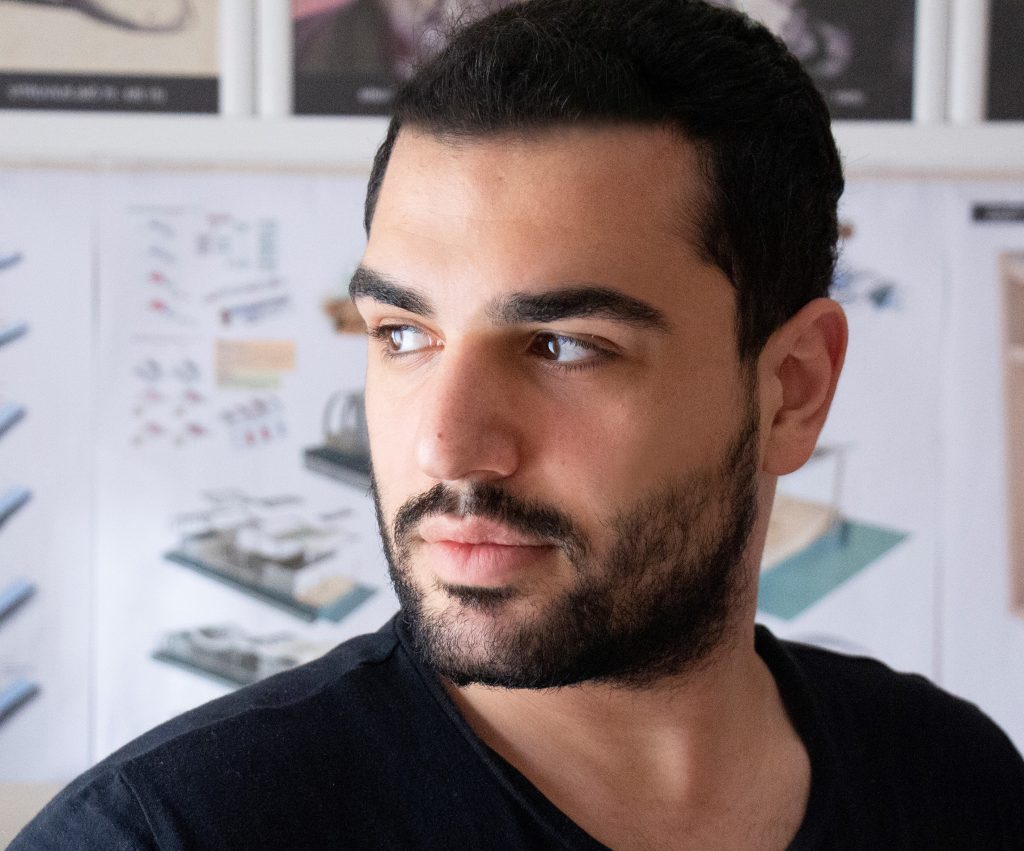
BiLT Academy Summit 2018 Recap
Shaping the future experts within the buildings industry, a motto in where we believe in and have striven for at our very first event in Ljubljana.
The BiLT Academy student movement organized its very first international summit at the University of Ljubljana. Over 63 students from 13 different countries had the unique possibility to get taught by 9 different mentors from all over the world.
We could not have done it without our Sponsors, big thanks to: Autodesk European Education Team, Graphisoft, the Faculty of Civil and Geodetic Engineering of Ljubljana, LRCZ & BiLT Europe!
Also, a big thanks to all the mentors, who have shared new knowledge to us all. These mentors are:
Point Cloud: Conor Shaw, Kelly Cone & assistant: Danielle Contreras
Computational Design: Daniel Hurtubise & Mostafa El Ayoubi
Clash Detection in BIM: Arik Shiby & Moty Vaknin
BEP in constructions: Marzia Bolpagni
Open BIM: Nathan Hildebrandt & assistant: Cristina Savian
Multi – platform workflows: Martin Taurer
And as last, the Keynotes of:
Andre Garcia Damjanov
Daniel Hurtubise
Nathan Hildebrandt
Big thanks to all the students & supporters at the event!
BiLT Academy Slack Worspace
The rescue engineers, we got a NEW VENUE!
Hi folks!
As the registration lists are getting fuller and preparation bags are being packed, we also have some exciting news!
Due to unforeseen circumstances, the first ever BILT Academy Summit has decided and agreed to move the venue to the Faculty of Civil and Geodetic Engineering, which will offer our attendees and mentors a better, more comfortable environment to get working and connecting! The Faculty is placed just west of the center, at Jamova Cesta 2, Ljubljana.
Sounds exciting? Most definitely it is! You can check out the facility in these awesome model pictures :
We are sorry for any inconvenience that this may cause to the attendees, and we offer full help with any issues that may arise. We would also like to wholeheartedly thank Tomo Cerovsek, Robert Klinc and the Faculty of Civil and Geodetic Engineering at the University of Ljubljana, who has offered to house us all BIM heads. Support from educational institutions plays a crucial role in us reaching our mission- to successfully shape the future experts of the building industry!
